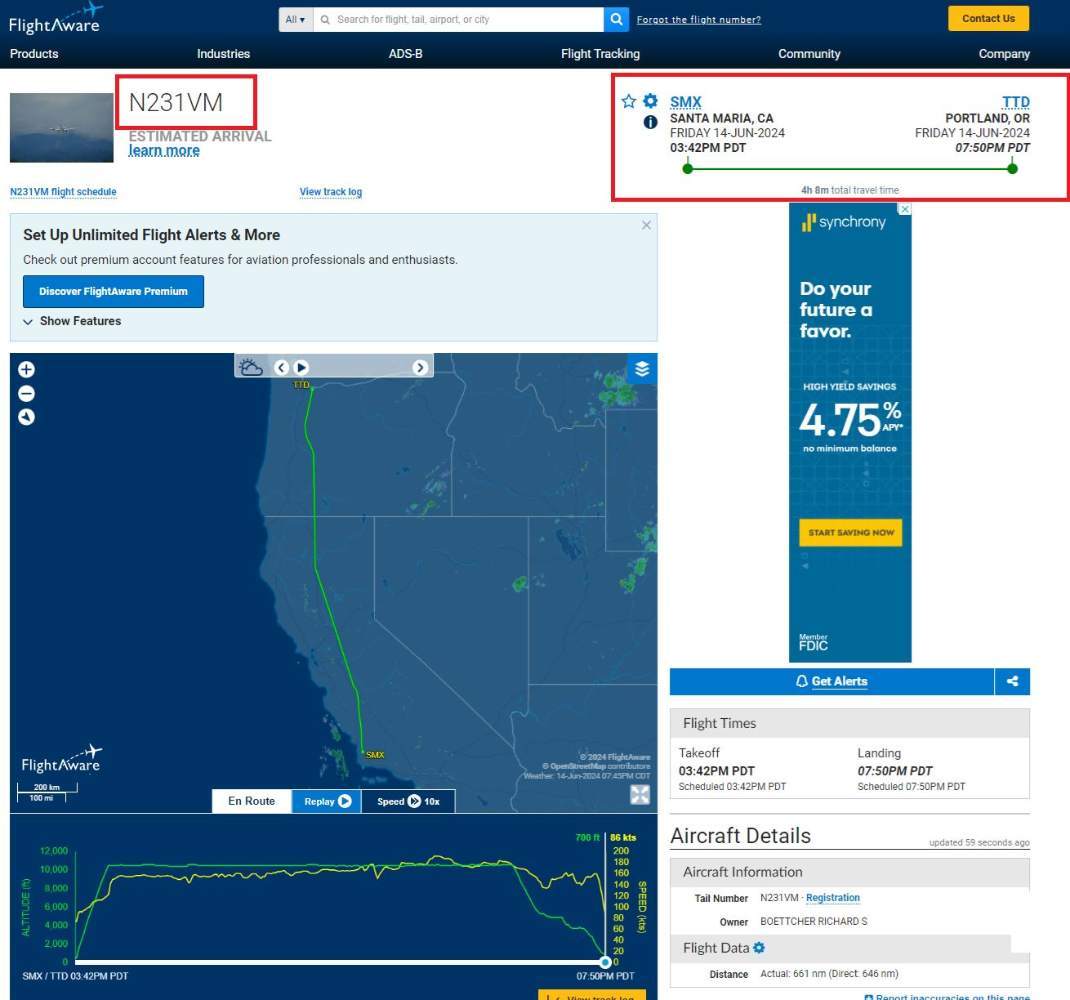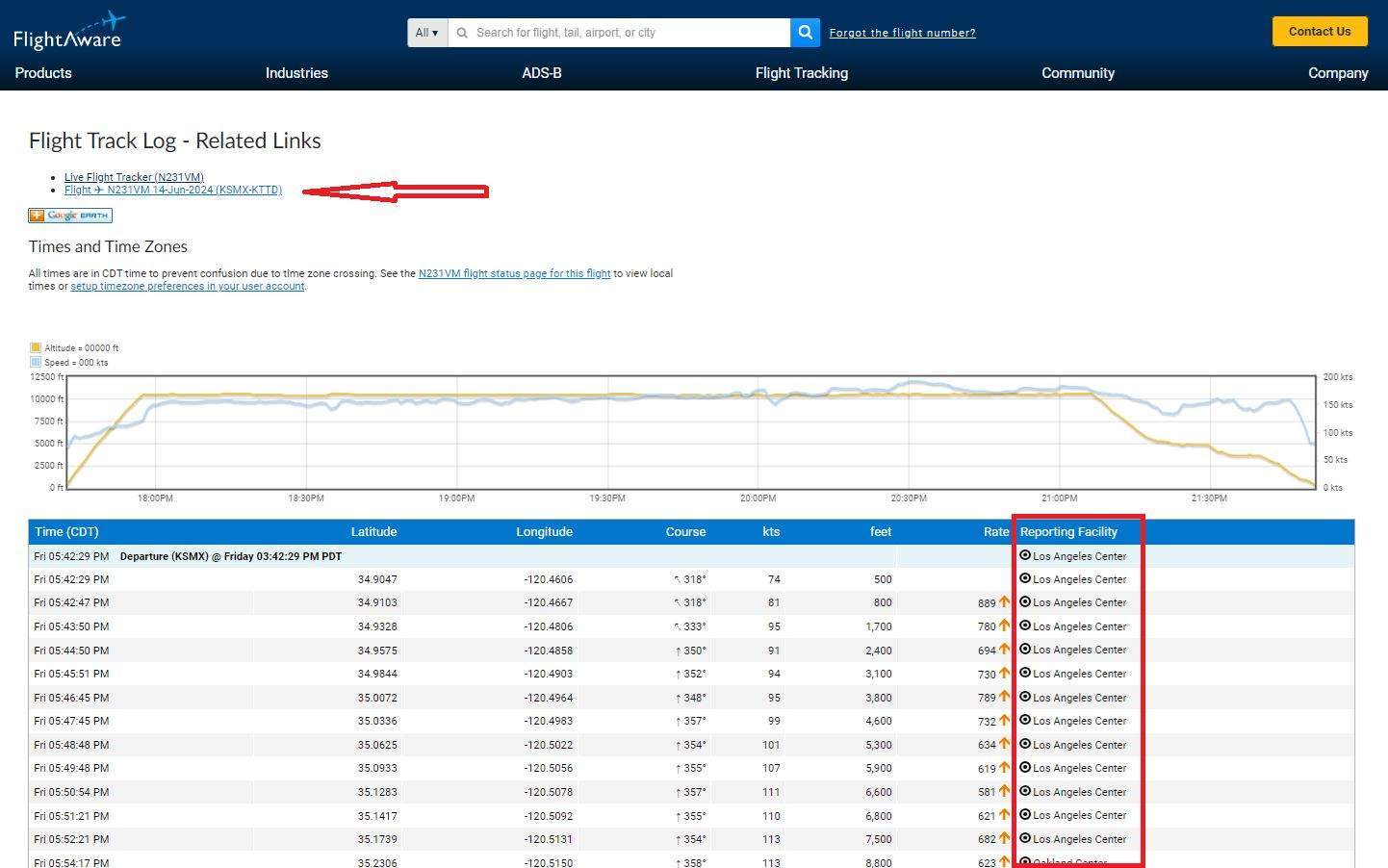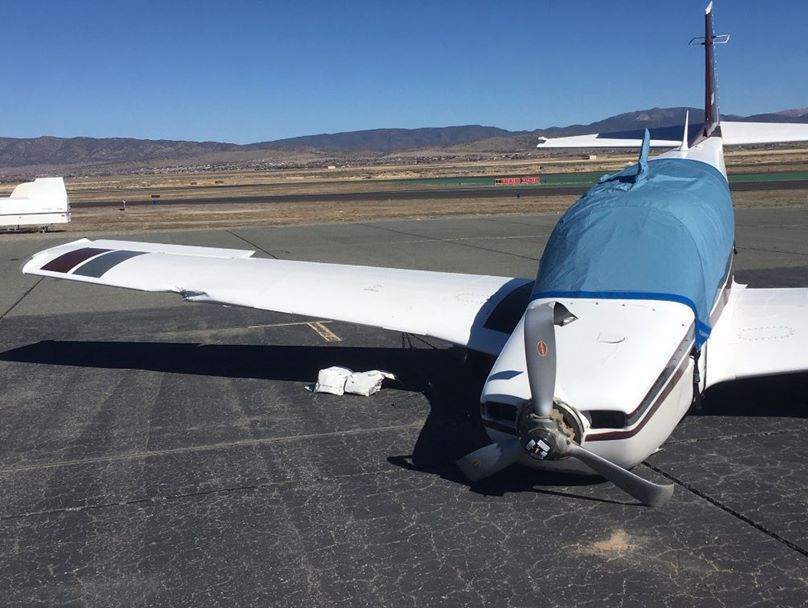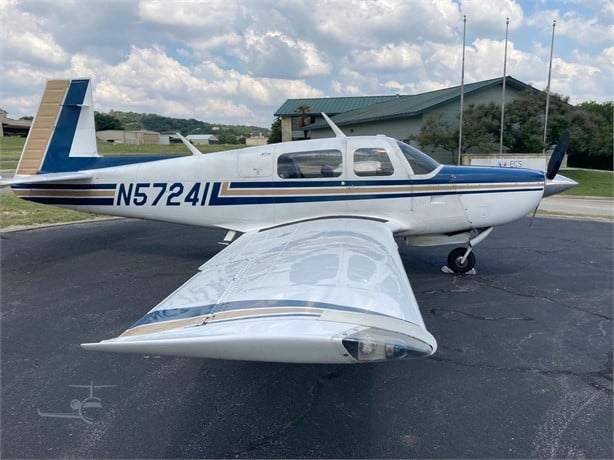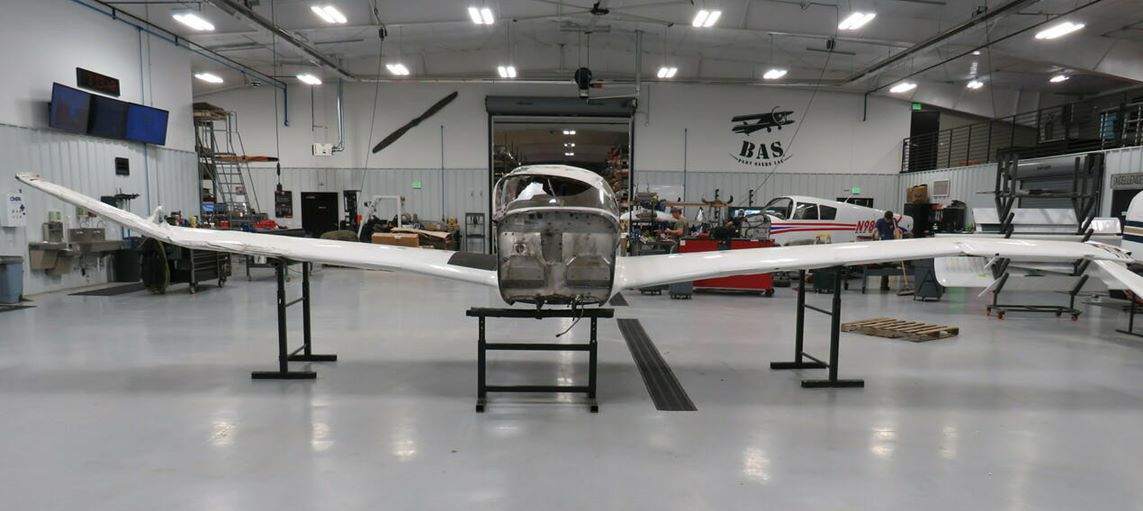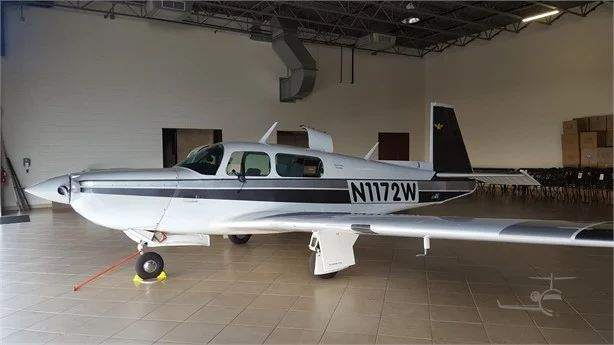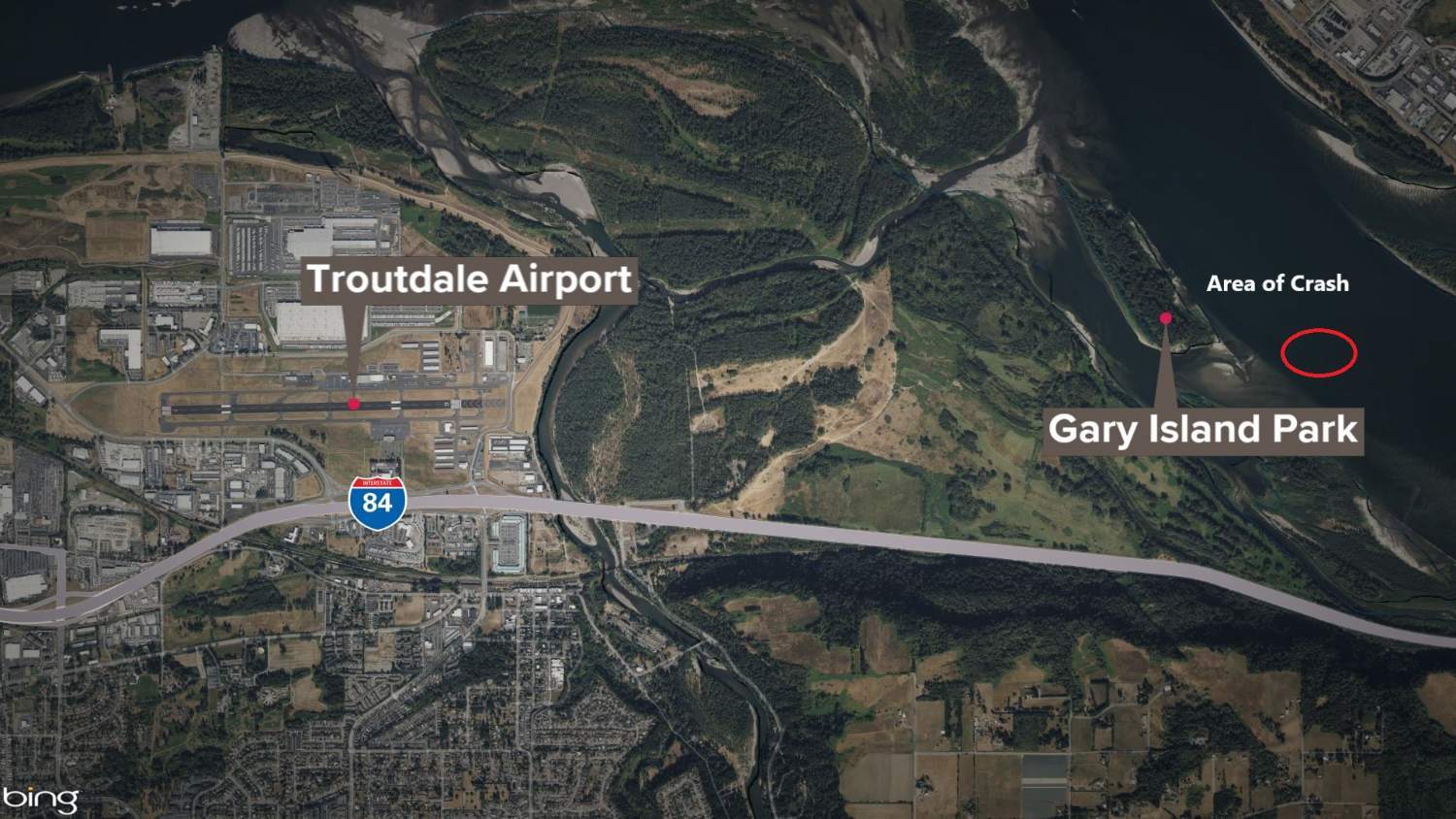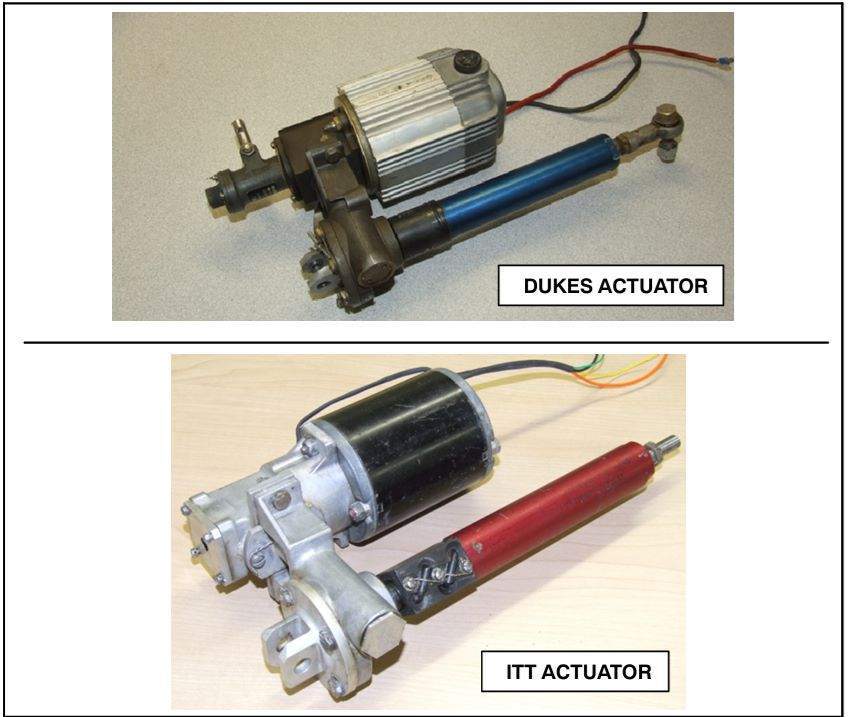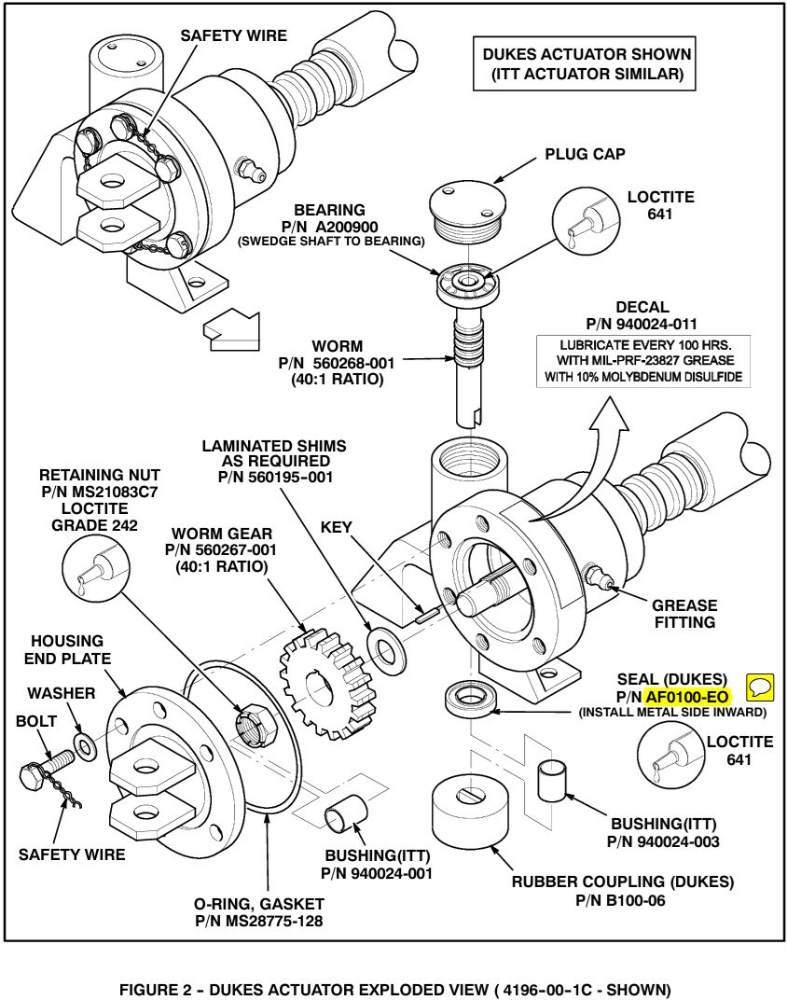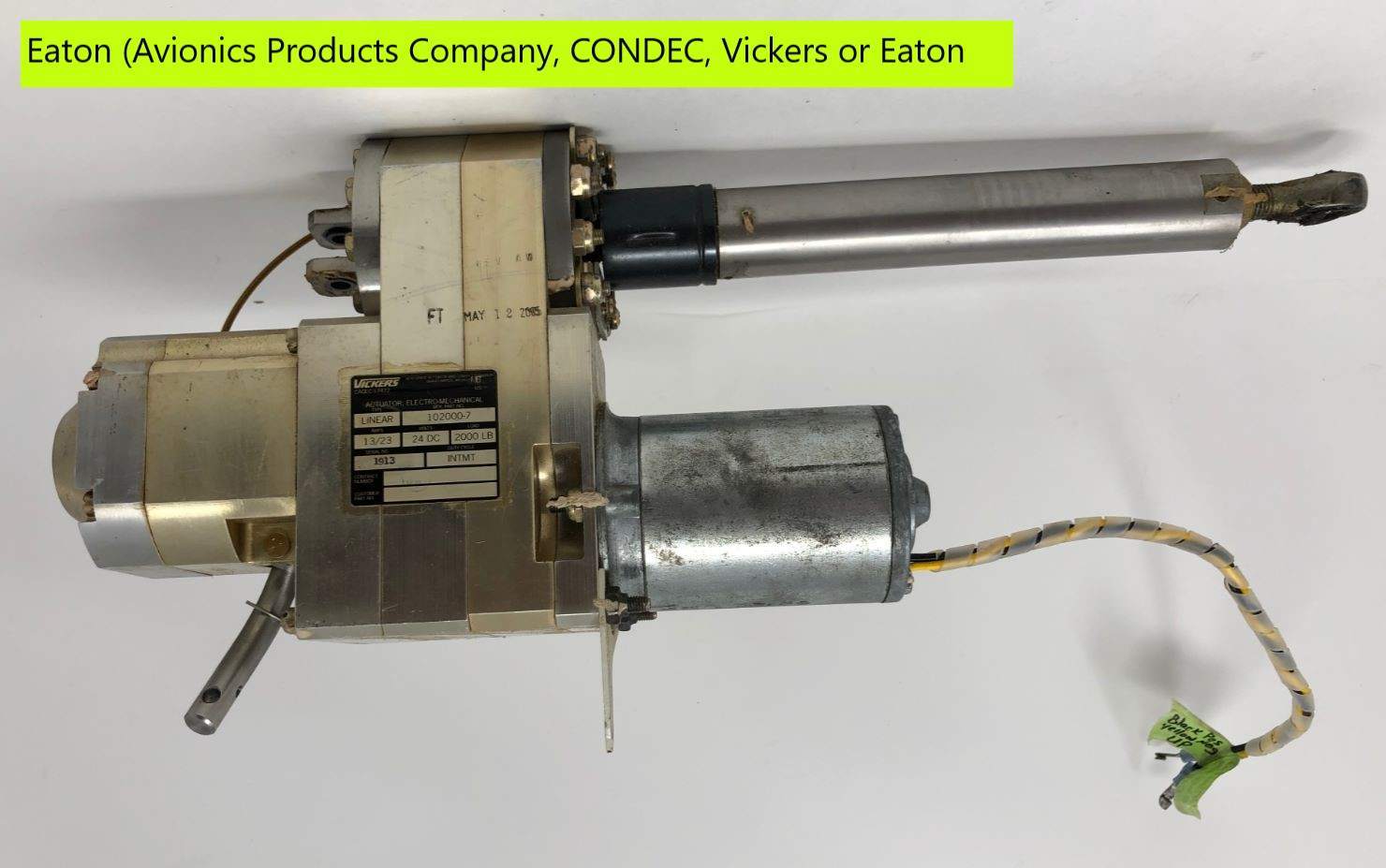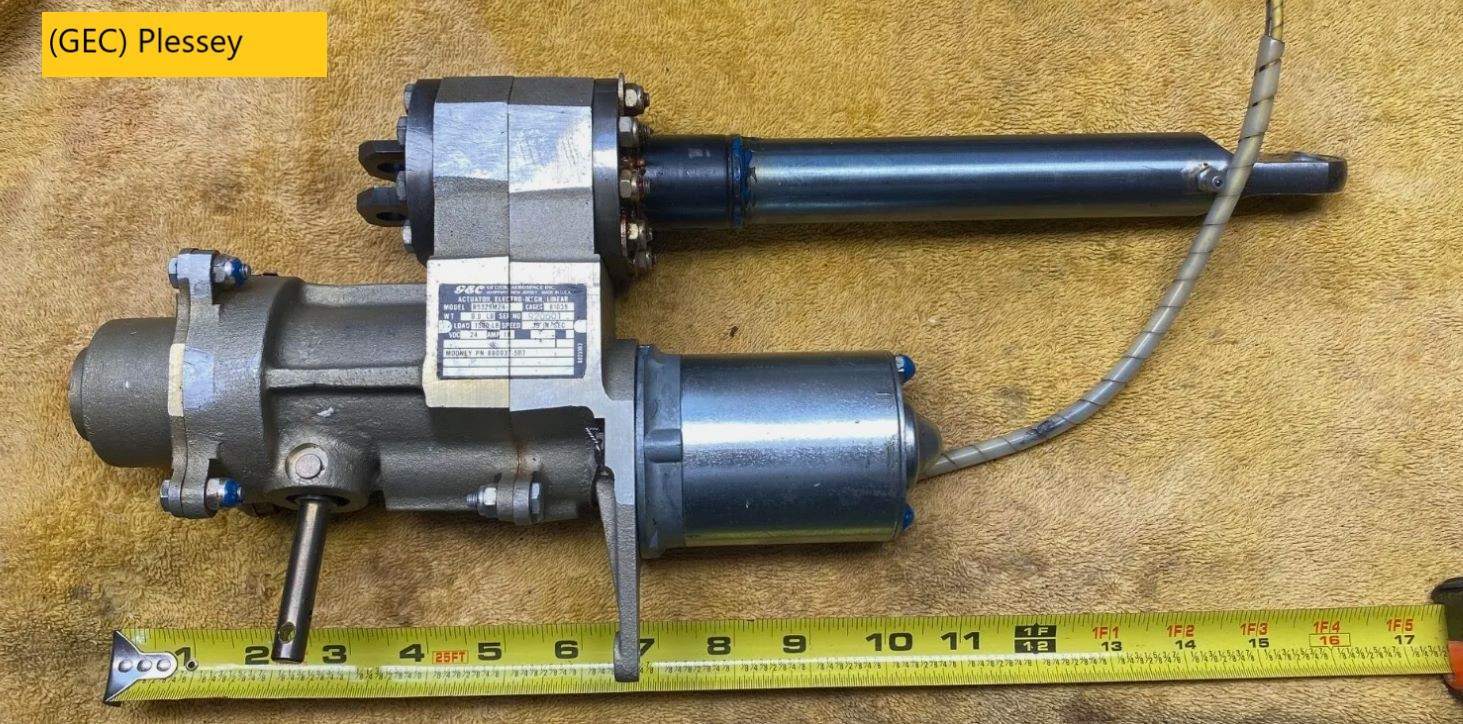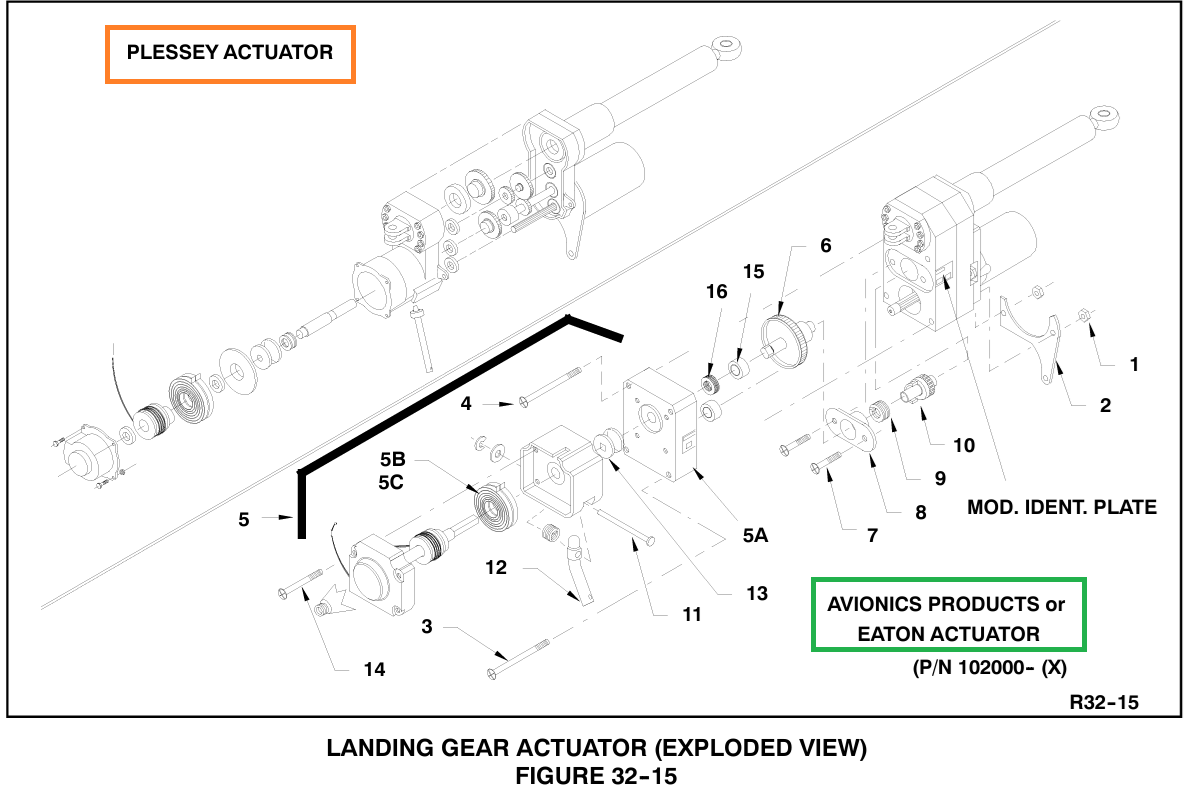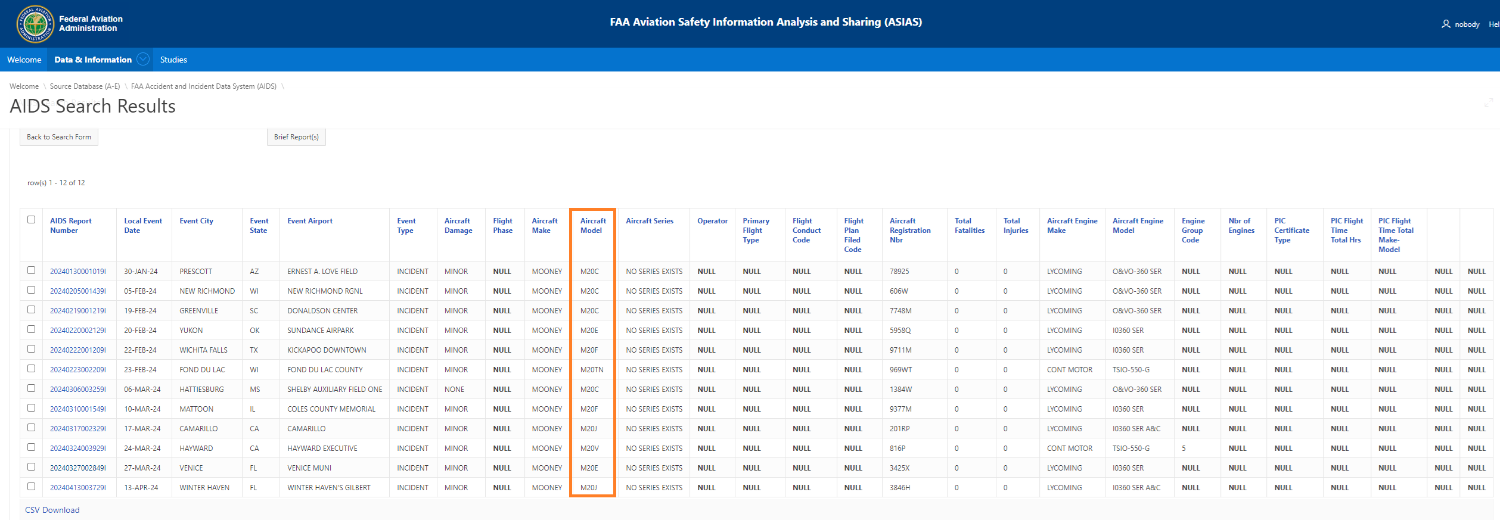
1980Mooney
Basic Member-
Posts
3,031 -
Joined
-
Last visited
-
Days Won
4
Content Type
Profiles
Forums
Blogs
Gallery
Downloads
Media Demo
Events
Everything posted by 1980Mooney
-
Can I get a sanity check on a hangar lease agreement?
1980Mooney replied to BlueSky247's topic in Miscellaneous Aviation Talk
@BlueSky247 It all sounds promising. What is the likelihood that you might move to another city in the near future? My plane has been located at 3 airports over 25 years. Have you paid for an approved hangar design and gotten a construction quote before signing? As @Z W highlighted there may be some surprises in store with recent increased pricing of labor and materials. Are you financing? If so, it could be advantageous to get an assignable loan. That way if you need to sell the remainder of your 30 year lease and building, the buyer can assume the remainder of the mortgage simplifying the sale. -
You suggested looking at less tangible, harder to assess things that precede a flight like pilot attitude, mental awareness and "Resignation", (you attached a link - see summary below.) But assessment of those things is rather "soft" with no hard and fast measurements. First, when a pilot makes light of a serious situation, how do you determine if that pilot is just a lighthearted person trying to put the best possible spin on a bad outcome? ... Or a pilot that is not sufficiently serious about risks, planning, procedures and mitigation? It's a bit like art or beauty. It looks different to different people. I have to admit that I was surprised that this accident pilot was joking to the FAA/NTSB in writing about his 2020 crash landing .(posted in the NTSB CAROL Docket). "The wheel went bouncing off the runway, which I saw. If it wasn't such a catastrophe, it would have been kind of funny." If I, by my own admission, had just forgotten my landing gear, and then when warned, stalled my plane into the runway because I lacked the skill (to add power, stay in ground effect, and reject the landing, going around), resulting in breaking off the nose gear and taking out multiple runway signs, I would be seriously upset. It would be sickening to see my nose wheel "bouncing off the runway", prop grinding into the runway, skidding into runway signs. I could not see anything funny about it, especially knowing that the plane was totaled and to be sold for scrap parts. If I were the accident's pilots age at the time (69), if it were me both forgetting gear and stalling the plane, my flying days would be over. My family would be upset, not trust and refuse to fly with me ever again, my insurance agent would be upset, the FAA would be upset and I would be upset. I would find no humor in any of it. Discussing it would be painful. Some might say he is just being honest and that doesn't indicate anything. So on what grounds would anyone do anything preemptively other than encourage him "to get back in the saddle", buy another plane and fly again? Second, I cannot see how anything good comes out of a confrontation/discussion by a peer pilot, uninvited, pointing out unsolicited discrepancies in another pilot's flying habits, attitude or style. It would likely be a short discussion with a friendly or more likely not so friendly, response to "get out of my hangar", "keep your opinions to yourself", "you don't know what you are talking about" or "it's none of your business". It needs to come from someone in aviation with authority like the FAA or AME or maybe your insurance company/agent or someone with clear stature in piloting skill like a CFI/CFII. Hazardous Attitudes Hazardous attitudes are attitudes that negatively affect the quality of your decisions. Recognizing them is the first step in neutralizing them. There are 5 attitudes: Anti-authority: Those who do not like anyone telling them what to do. Impulsivity: Those who feel the need to do something, anything, immediately. Invulnerability: Those who believe that accidents happen to others. Macho: Those who are trying to prove that they are better than anyone else. “Watch this! Resignation: Those who do not see themselves making a difference. Here's a list of antidotes to the 5 hazardous attitudes discussed in the previous chapter. Anti-authority: Follow the rules. They are usually right. Impulsivity: Not so fast. Think first. Invulnerability: It could happen to me. Macho: Taking chances is foolish. Resignation: "I’m not helpless. ?I can make a difference. Operational Pitfalls Operational pitfalls can be categorized under the following: Peer Pressure: “Come on, don’t be a chicken, you can totally do that.” Mind Set: Inability to cope with changes and fixating on the original goal. Operating without visual line of sight (VLOS): Losing VLOS in order to complete the mission without having to move. Getting behind the aircraft: a constant state of surprise at what happens next. Loss of situational awareness: not knowing where you are or what/who is around you. Operating past the battery/fuel warning: Ignoring low battery/fuel warnings and forcing the aircraft to land in an emergency. Operate above maximum authorized altitude: ignoring LAANC altitudes or flying higher than 400 feet AGL. Neglect for planning, inspections and checklists: relying on short or long -term memory or over-trusting the equipment. Stress & Stress Management Stress is the body’s response to demand. The effects of stress are cumulative and can lead to an intolerable burden. There are two types of stress: acute and chronic. Relaxation, physical fitness and time management help manage the accumulation of stress. Stress Management While Flying It is important to know and respect your own personal limits. These will change based on the aircraft flown. It's also important to avoid distracting situations. Be sure to have a visual observer or crew member deal with people who may approach the pilot. Remain calm during emergencies. Rely on your training, utilize all available resources. Hazard and Risk Hazard is the real or perceived condition, event, or circumstance that a pilot encounters. Risk: the assigned value to the potential impact of a hazard. Dealing with risk involves three steps, which are discussed in more detail in these videos. Risk Assessment Risk Mitigation Risk Management
-
N231VM (1982 MOONEY AIRCRAFT CORP. M20K owned by BOETTCHER RICHARD) Aircraft Registration - FlightAware Boettcher had owned the original 1980 M20K, 25-0426 since 2006 25-0426 crashed February 14, 2020 1982 M20K, 25-0716 appears on M231VM registration on June 19, 2024 although he owned it since December 2020. N57241 (1983 MOONEY AIRCRAFT CORP. M20K owned by BAS PART SALES LLC) Aircraft Registration - FlightAware Boettcher registered November 15, 2021 so purchased some time before. BAS picture above shows they received the wreckage February 11, 2022. N1172W (1982 MOONEY AIRCRAFT CORP. M20K owned by BOETTCHER RICHARD) Aircraft Registration - FlightAware Boettcher registered December 6, 2022 so purchased some time before. Registration indicates he moved to Ridgefield, WA on or before September 4, 2023 Changed N number to N231VM - some time after September 2023 and before this month.
-
Interesting comments that he made to FAA/NTSB in March 2020 NTSB CAROL Docket: He reported that "he wasn't himself" and "not thinking" "Things were happening too fast. I think I pulled back pressure on the yoke and with the plane in landing configuration, I think I stalleded the airplane and dropped the airplane onto the runway, The mains were fully deployed, however, I think that I put too much stress on the nose gear, and it broke off at the axle. The wheel went bouncing off the runway, which I saw. If it wasn't such a catastrophe, it would have been kind of funny." Comments he made to press on Monday: "I tried to restart the engine and it wouldn't restart, tried to switch tanks ... " "I don't know if it's a miracle or just good piloting techniques," Boettcher said. "I don't know what but I did the right thing." "I feel like I want to go home and go to bed and forget about it all," he said with a slight laugh. These crashes don't seem to phase him. I bet he buys another M20K.....
-
If you look at the specs of N1172W which he bought in September 2023 and renumbered it N231VM, it has a GTX 330-ES. That has ADSB-out in 1090 MHz Extended Squitter (1090ES) which makes sense since it is a turbo that can operate above 18,000 ft. https://www.aircraft.com/aircraft/192905111/n1172w-1982-mooney-m20k-231 Something is screwed up with his ADSB registration. His flight on Firday June 14 shows up 2 ways on FligthAware. One is with ADSB signitures but registered as N131VM. The other is without any ADSB and is registered as N231VM. https://www.flightaware.com/live/flight/N231VM https://www.flightaware.com/live/flight/N131VM
-
It appears that three (3) Mooney M20K's owned by this pilot have been destroyed in the last 4 years. Two of the crashes are documented in the Aviation Safety Network Database. The N number's are the same and they are both M20K's but the planes are different model years with different serial numbers. The third M20K was purchased between the 2 crashes. There is no record of anything happening to it; however it wound up at BAS with bent wings. It is currently being sold for parts. In February 2020 he crash-landed N231VM - it was a 1980 M20K ser. no. 25-0426 Loss of control Accident Mooney M20K N231VM, (flightsafety.org) Kathryn's Report: Landing Gear Collapse: Mooney M20K, N231VM; accident occurred February 14, 2020 at Minden-Tahoe Airport (KMEV), Douglas County, Nevada (kathrynsreport.com) Pilot, then 69 years old, admitted that he didn't use his checklist. On Final at about 20 ft above the runway threshold, a plane holding for take off announced on the frequency "gear not down". He pulled the gear switch, claimed he added power, and raised the nose. The plane slammed into the runway and broke the nose gear off (it may not have been fully extended), hit several runway signs - possibly he stalled it. The plane was scrapped. Parts can be found on Arizona Air Salvage. https://azairsalvage.com/product-tag/m20/ In December 2022 he purchased N1172W and renumbered it N231VM. It is a 1982 M20K ser. no. 25-0716. He crashed it on Monday. https://www.aircraft.com/aircraft/192905111/n1172w-1982-mooney-m20k-231 N1172W (1982 MOONEY AIRCRAFT CORP. M20K owned by BOETTCHER RICHARD) Aircraft Registration - FlightAware Incident Mooney M20K 231 N231VM, (flightsafety.org) In November 2021, after the crash of N231VM and before the purchase of N1172 (the new N231VM), he purchased N57241, a 1984 M20K ser. no. 25-0797. There is no record of an accident, but it wound up scrapped at BAS with bent wings. It is currently being sold in parts. https://www.aircraft.com/aircraft/205957049/n57241-1984-mooney-m20k-231se https://www.flightaware.com/resources/registration/N57241 Mooney M20K Fuselage with airworthiness, bill of sale, data tag and log books (baspartsales.com) First M20K Second M20K at 3,440 hours https://www.aircraft.com/aircraft/205957049/n57241-1984-mooney-m20k-231se Same plane at 3,445 hours Third M20K Before N-number change. After
- 73 replies
-
- 14
-

-

-

-

-
G100UL - Martin Pauly YouTube video
1980Mooney replied to EarthboundMisfit's topic in Miscellaneous Aviation Talk
You mean like DeltaHawk? -
Do you understand why Skip @PT20J advised to avoid a Plessey actuator? Plessey is no longer supported and the "no back spring" for the Plessey actuator is not available If you have a Plessey fail, the only option is to replace it with an Eaton The last prices that I saw for a yellow tagged used Eaton actuator that has been repaired by Lasar was about $11,000 (and that is just the unit - shipping, tax, installation,... more) I would budget about $15,000 when it is all said and done If you fall in love with a plane with a Plessey - ask for a $15,000 price reduction. When you look at M20J's you will find Duke's actuators - installed on M20J in 1977 through serial no. 24-0377 ITT actuators (that are basically copies of Duke's) that may have replaced a Dukes Eaton style actuators with the names Avionics Products Company, CONDEC, Vickers or Eaton (all the same design and built in the same place - company just sold many times ultimately to Eaton) Plessey or (GEC) Plessey - installed starting in the early 90's
-
You probably saw this in the Safety & Accident Forum. It is a 1974 M20F with electric gear. It probably has the same Dukes actuator as your plane. They were also flying with the gear down to get to a mechanic who could fix it.
-
Real Risk of Gear Box Failure
1980Mooney replied to MikeOH's topic in Vintage Mooneys (pre-J models)
It seems like an extreme solution to something that does not currently exhibit any problems (you don't mention whether it is a Dukes or Eaton). It's kind of like removing a functioning vintage auto-pilot from your plane and hand flying because you fear it might malfunction one day. Granted that you save some weight, but it is no silver bullet solution. There are a lot of J-bar gear ups/gear collapses. - probably more than you think. Most of these early 2024 reported incidents below are gear-ups/gear collapse. You have to dig into each one to see - and on some of the E, F's you have to search to see if there is history of electric gear being installed. I think about 5-6 incidents during Feb-March are J-bar gear-ups/gear collapse. You can't always identify the cause (pilot vs. mechanical). https://www.asias.faa.gov/apex/f?p=100:12:::NO:12:: -
Question Landing Gear Actuator
1980Mooney replied to charlesual's topic in Vintage Mooneys (pre-J models)
@charlesual Also @Fritz1 posted this - "the dukes actuator is known to be undersized for the job". -
Question Landing Gear Actuator
1980Mooney replied to charlesual's topic in Vintage Mooneys (pre-J models)
Dukes? no idea of value. - what is the condition- Used on eBay, Overhauled, Yellow tagged? On eBay people are asking $6,000 for used Eatons of unknown condition. The Eaton is superior to the Dukes. It was installed right up to the end - of course since mid-80s it was 28v. Yes Eaton actuators can handle inner gear doors. -
Question Landing Gear Actuator
1980Mooney replied to charlesual's topic in Vintage Mooneys (pre-J models)
If you look closely at the motor on your installed landing gear actuator, it looks like it was manufactured in 1978, This appears to be an early version of the Avionics Products Company actuator, Serial number 817. That actuator is superior to the Dukes, as @PT20J highlighted. Mooney dropped the Dukes and started using the Avionics Products Company actuator as standard in 1977 starting on the M20J with serial number 24-0378. Avioncis Products Company, via corporate sales and dispositions, eventually became the Eaton actuatror. (see below). However, you also have a Vickers label on it without any model number or serial numbers and a "Clutch Spring Replacement" label (that is the "No Back Spring"). I think that you have a unit that was overhauled by Vickers. And since Eaton bought Vickers in 1999 and combined it with its Avionics Products Company (Division of Consilidated Controls) after that date, this was likely overhauled after 1999. I would bet that this was installed in your plane in 2000 or after. Avionics Products Company (Denville, NJ) was owned by Consolidated Controls Corporation (CONDEC) Avionics Products Company sold actuators to Mooney labeled under the name Avionics Products Company (Denville, NJ) Some are just labeled CONDEC - Consolidated Controls Corp. Consolidated Controls Corporation (CONDEC) was purchased by Chicago industrialist Farley in 1984. The acquisition went badly for Farley and Farley sold CONDEC to Eaton in May 1986. So in 1986 Eaton inherited Avionics Products Company actuators - they changed the labeling at some point to Eaton. I have seen some labeled with Eaton Valve and Actuator Div. (El Segundo, CA) In 1984, Libbey-Owens-Ford (L-O-F) acquired Vickers Inc., a leading maker of hydraulic and electrohydraulic systems, from the Sperry Corporation. (no relation to the Vickers PLC (UK). L-O-F combined Vickers with Aeroquip, which they had purchased in 1968 and renames it Aeroquip-Vickers In 1999 Eaton acquires Aeroquip-Vickers The Vickers Aerospace Actuators and Controls Div.is located in Grand Rapids, Michigan. There are Mooney actuators labeled with only the Vickers name (Vickers Aerospace Actuators and Controls Div.- Grand Rapids, Michigan) It is not clear if Vickers made any actuators before the Eaton takeover. More likely Eaton consolidated all Mooney landing gear actuator manufacturing in the Vickers division. However, the actuators labeled with "Vickers" do no say that they are a division of Eaton. -
Duh....Hasn't that always been the story of aviation in the growth of the SouthWest? Growing up in Albuquerque I thought airports just temporarily parked on undervalued land and they would leave as soon as people showed up. Bill Cutter, who started Cutter Aviation in 1922, had 2 airports before moving to the Sunport. I can think of 2 other airports plus Coronado Airport that existed. By the early 60's all had been sold, vacated and turned into housing development subdivisions. By the 90's even Coronado Airport was purchased by the Sandia Pueblo and turned into a Casino. In your North East Phoenix neck of the woods it looks like 5-6 airports have already succombed to urban sprawl and housing development. Why would it be any different now? http://www.airfields-freeman.com/az/Airfields_AZ_Phoenix_NE.htm#casablanca
-
Lots of garbage to dig through on the FB "Airplane and Coffee group" site - never found the video but saw a comment "They dragged it to the FBO on its own gear, not sure what happened?" So it sounds like a gear up landing. - the gear came down after it was lifted.... As we know many times the "lifting" does more damage than the landing...
-
Since KDWH - David Wayne Hooks is towered, the control tower would have reported that to the FAA. You are probably right on both counts but that is par for Hooks Tower. I always thought Hooks was a Contract Tower based upon typical performance but am surprised to see that they are a FAA Tower. It must be because of proximity to KIAH Bush. https://www.faa.gov/about/office_org/headquarters_offices/ato/fct_list https://www.faa.gov/sites/faa.gov/files/about/office_org/headquarters_offices/ato/FCT_Map.pdf I would be curious to know how/where you got access to the hangar surveillance at KDWH (your profile indicates you may have viewed it in Kerrville) . Is there a video feed on some airport or FBO site? If you could "hear the crash" as opposed to a gear-up landing sliding in long grass, it must have been of substantial force - a stall in ground effect or tearing the gear off?. Please share if able.
-
This is the same sad old story that those who lord over this site don't want to hear or talk about. It drives up insurance rates and just continues to make Mooney's almost uninsurable for new pilots. New purchase - not purchased earlier in the year as @Yetti suggested Registered May 28, 2024 in purchase from owner in Prescott AZ Plane relocated from Prescott AZ to David Wayne Hooks in Houston on May 10-11 https://globe.adsbexchange.com/?icao=a0b1bc&lat=32.042&lon=-105.643&zoom=6.9&showTrace=2024-05-11&trackLabels×tamp=1713648404 Appears to be a new Pilot. Registration is to an LLC. The name listed as the LLC Principal appears in FAA Airmen as a new Private Pilot - SEL dated 7/5/2023. Lots of what appear to be training flights between Hooks and other airports starting May 12 https://www.flightaware.com/live/flight/N144BY/history/80 New pilots are enthusiastic. Enthusiasm sometimes clouds judgement. Yesterday N144BY flew what appears to be Touch and Go's at Hooks (don't see any other T&G's at Hooks before this - may have been first time pilot tried it) Yesterday was not a great day to fly. - something called a Tropical Storm in South Texas was moving in. KDWH was just on the edge of the weather. At 20:10 there was no wind and ceilings BKN 41 - maybe when he arrived at the airport. But it changed rapidly KDWH 192100Z AUTO 05009G17KT 10SM SCT043 SCT050 BKN060 30/24 A2989 KDWH 192055Z AUTO 05009G14KT 10SM SCT041 BKN050 BKN070 30/24 A2989 KDWH 192053Z AUTO 05014G25KT 10SM SCT041 BKN055 BKN070 29/24 A2989 RMK AO2 RAE02 SLP120 P0000 60009 T02940244 58019 KDWH 192050Z AUTO 05011G19KT 10SM FEW036 BKN043 BKN055 29/24 A2989 KDWH 192045Z AUTO 05010G18KT 10SM FEW036 SCT043 BKN055 30/25 A2989 KDWH 192040Z AUTO 04006KT 10SM FEW036 SCT043 BKN055 30/26 A2990 KDWH 192035Z AUTO 04006KT 10SM FEW036 SCT043 BKN055 29/25 A2990 KDWH 192030Z AUTO 05007KT 10SM SCT039 BKN060 BKN080 29/26 A2991 KDWH 192025Z AUTO 05003KT 10SM SCT041 BKN060 BKN080 29/26 A2991 KDWH 192020Z AUTO 04003KT 10SM SCT041 BKN055 29/26 A2991 KDWH 192015Z AUTO 06003KT 9SM BKN041 BKN055 29/26 A2991 KDWH 192010Z AUTO 00000KT 10SM BKN041 28/26 A2991 If you listen to LiveATC for Hooks while he was in the pattern you will hear the tower warning that winds were pretty steady at about 10 kn from the east gusting to over 20 kt. The runway is 35L. It looks like winds were gusting to 25 kn as he turned base. If you look at Flightaware it appears that the crosswind was blowing N144BY through the centerline of 35L. The picture makes it appear that the gear are up - no big ruts plowed into the grass but I suppose that they could be sheared off out of sight.
-
-
This discussion went off the rails with @N201MKTurbo's comment about a disconnected aileron rising to "the stop". OK that was too extreme, but his theory is otherwise basically correct. (BTW - per the Service Manual - Down stop limit is 8 degrees and Up stop limit is 12.5-17 degrees for Serial No. 0001 through 1037 and 12.5-14.5 degrees after.) Back to the OP's @0TreeLemur's question about slop and dead spots. As @N201MKTurbo pointed out there are 2 separate sources of bearing slop/ excess clearance which affect the feel/handling differently. If there is slop/looseness in the hinge on the yoke or the heim linkages attached to the yoke under the panel (4, 10, 8, 12,14) anywhere up to where the L&R aileron control rods (15) are connected together at (16), then you will get slop/looseness in the yoke (dead spots) while the ailerons are completely stable and not moving. If there is slop/looseness in the bellcrank joint/hinge and heim lingages (push/pull tubes and bellcranks) outboard on the wings connected to the ailerons (17, 19, 28, 30), then the slop will be taken up due to the lift on the ailerons in stable flight As pointed out in the post on the prior page "Ailerons high in trail" from 2018, several Mooney owners (presumably with a lot of slop in the outboard heim linkages) report seeing the ailerons rise as much as 1 inch above the flap in flight. Assuming the chord on the aileron is about 12 inches that is about 5 degree upward deflection. Obviously they are still attached and they still have upward lift holding them up so it remains to be seen what the maximum deflection would be. Also none of the posters with "high trailing ailerons" said that they experienced any "dead zones" I think this is because even when with an 1 inch (5 degree) upward deflection due to "slop" there was still lift (we can review all the theory and analysis but the real world "acid test" is that there is still material lift on the ailerons.) As a result one aileron will always have the slop pulled out tight as you deflect the ailerons in opposite directions (one aileron control tube is pushing while the other is pulling. I think this covers up any feeling of a dead zone in the opposite aileron as the push-pull tube reverses direction All the heim and other bearings remain pulled tight in one wing while the bearings in the other wing are momentarily not touching either side of the bearing. Once the "momentarily loose" push/pull tube moves so that the linkages touch the other side of the bearing, then the slack has been taken up in that direction. I think that this is also a matter of degree - minor slop in the outboard heims will never be felt. Major looseness at some point might be noticeable. About 10 years ago I replaced one of the linkages (29) to the aileron hinge due to looseness. The heim bearings were welded on so I had to get it from a Mooney MSC. I can't remember the price I recall that I thought it outrageous back then. I bet it is more so now. This diagram is typical of most Mooney's but not exactly the same as your J:
-
Here is a 2018 topic on ailerons floating up above the flaps during level flight. Some had ailerons rising in flight as much as 1 inch above the flaps on both sides in level flight. As @jetdriven explained (and like @N201MKTurbo said): "So you have 16.75lb per sq ft of wing loading. Those ailerons are 3-4 sqft. So they have 50-67 lb of force lifting them upwards in flight. Either start replacing stuff to get the slop out, or rig them lower so they fly level in cruise. Check the ailerons with rigging boards, while holding both up with 20-50lb of force, to be sure the flaps aren't 2 degrees down instead of the ailerons looking high." The Service Manual says to adjust the ailerons 0 to -2 degrees down while on the ground (droop below the flaps when fully retracted). For the same reason as stated above, any clearance/slop in the heim bearings or turnbuckles will be taken up in aileron rise during flight due to lift on the ailerons.
-
Agreed that the price range of a new Lycoming or Continental keeps growing or to paraphrase @aviatoreb's comments they keep giving us reasons to set bigger and bigger piles of money on fire.... Also another thing not mentioned in the cost of a retrofit - if you want a heater in your plane you will have to add a coolant fed heat exchanger and fan system inside the cabin or potentially mount it in the engine compartment and tie into the existing SCAT ventilation/heater tubing. These costs all add up. The things I don't get with Deltahawk: I have never seen any "real world" performance data published from the certified engine in the Cirrus SR-20 mule. (if have missed it someone please post). Lab dyno fuel consumption/HP provided for two (2) data points is interesting and one indicator - but real performance in the SR-20 is another. After all they have been flying the prototype for 10 years - in 2014 it went to Oshkosh in an earlier version. If they have been perfecting the certified DH-180 in a Cirrus SR-20 testbed for 10 years why isn't Cirrus an early adopter? (or why hasn't Deltahawk teamed up with Cirrus to roll it out to them first?) After all Cirrus is building GA aircraft in material numbers. Instead they announced at the time of certification that they teamed up with Bearhawk in homebuilt Is Cirrus cool to Deltahawk because China State Aviation (AVIC) owns both Cirrus Aircraft (through its CAIGA subsidiary) and Continental Aerospace (through its AECC subsidiary) which markets its own diesel engine via the acquisition of Thielert? - and see this as competition which they don't want to assist? In the Cessna Pilots Association December 2023 article on Deltahawk, Dennis Webb, Deltahawk's Director of Marketing and Certification, tells the author " Webb promised me that we can expect STCs for the Cessna 172 and other Cessna models at some point." WTF? - there are only about 40,000+ Cessna 172 still flying. Instead they want to piddle around with Blackhwak Aircraft and sell onesies and twosies? It doesn't sound like a priority. If there is no urgency regarding providing STC's for Cessna (another 20,000+ 182's for the 235 HP variant, another 4,000+ Cardinals, etc, etc..), I seriously doubt you will see a Mooney STC very soon.
-
There is no reason to replace the Plessey gear actuator in 350 hours when it reaches 1,000 hours. It is not an AD. 1,000 flying hours may not have a good relationship to actuator cycles. - consider a family flyer vs one used for rental or training. That said, if you buy a plane with a Plessey and it does fail for any reason you are looking at a high cost for the actuator. The labor to swap it out does not sound too bad. Per Tom Raush at Top Gun from the same Mooney Flyer "Since 1977, Mooney has used a linear jack screw actuator, which is a much more reliable system. While there are several manufacturers, all are interchangeable. Later models are 24 volt, but the motor is easy to change so you can put a newer actuator in an older model, just by changing the motor. " As @PT20J says that only buy it if you have a way to replace the Plessey. That means there needs to be a substantial discount in the purchase price, or like @KSMooniac have a spare in hand.
-
This is from 2017 but Tom Raush at Top Gun talks about how they rebuild the Dukes. He also indicates that the 40/1 gears are available but the disengage unit is a high wear item which they have to scrounge from salvage. See page 18 in the attached Mooney Flyer " The early Mooneys have Dukes and ITT actuators. These are a real problem today, since we can't get parts, except for the updated gear kits (40:1). Most commonly, the disengage unit that allows the manual extension crank to engage, happens to be a high wear item, and we have no parts available. We have had to retrofit newer gear actuators to older models because of lack of parts and have almost used everything in the salvage yards." 2017-AugTMF.pdf (themooneyflyer.com) Don Maxwell's site makes it sound like they rebuild the Dukes and ITT actuators. His post shows the wear patterns on the gears that precede failure. AD 75-23-04: SB M20-190 | Mysite (donmaxwell.com) As @Yetti said, if it is the electric motor issue that should be reparable.
-
ITT Actuators Mooney SB M20-189A allowed for the substitution of the ITT actuator to replace the Dukes actuator. The ITT actuator is almost a carbon copy of a Dukes actuator. Don Maxwell believes it is not as good. Both actuators have the same gears and that the ITT actuator is not addressed in the AD or SB M20-190. He inspects the ITT just as a Dukes, and have found several near failures that have never been inspected. AD 75-23-04: SB M20-190 | Mysite (donmaxwell.com)

